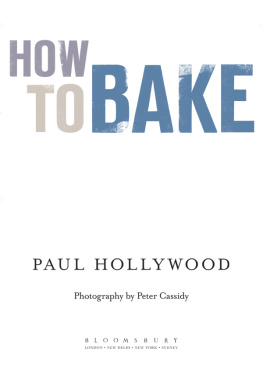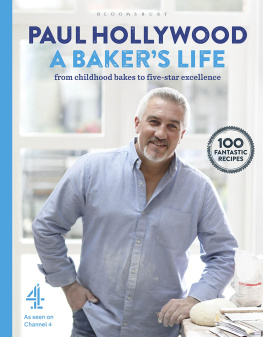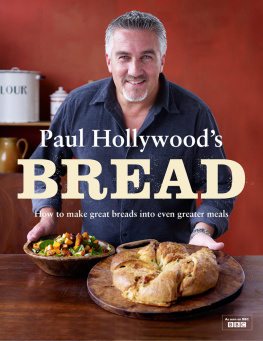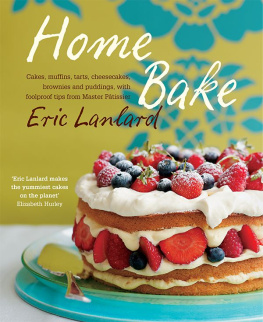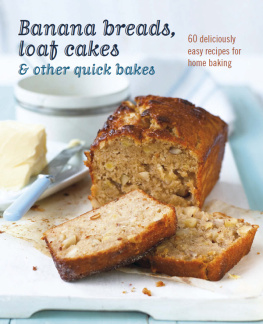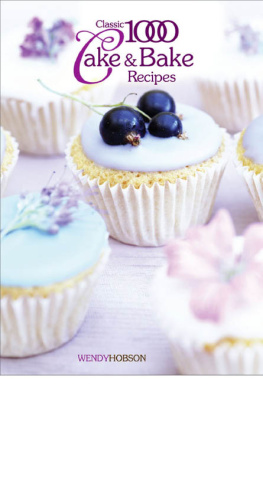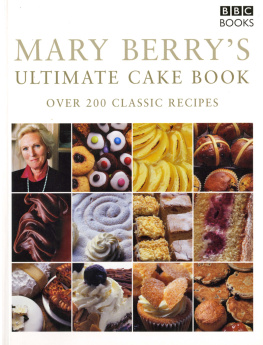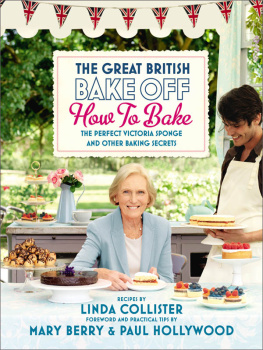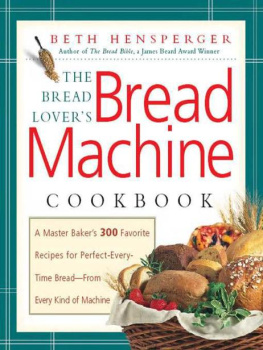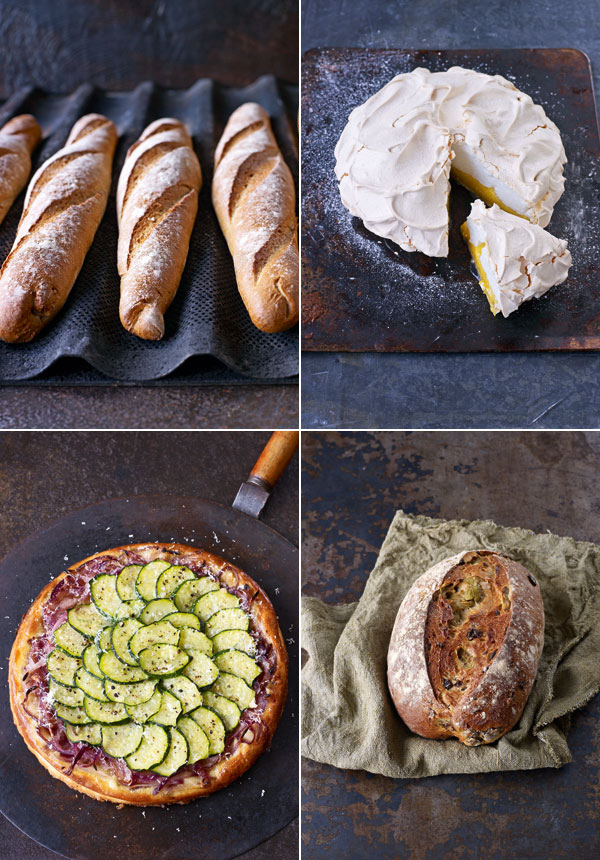Introduction
I have been passionate about baking since I was eight years old. My father was a baker and I spent a lot of time in his shops as I was growing up, helping with jobs such as jamming the doughnuts and filling scones with cream. I loved to see the professionals at work. I was intrigued by the way a baker would take a few simple raw materials and create a beautiful and delicious finished product from them. To me, watching the kneading of dough was almost hypnotic. That fascination is with me to this day. I have been baking for thirty years now and Ive never wanted to do anything else.
When I was seventeen I was let loose on the tables where the loaves and pastries were formed, before learning the correct way to bake all the breads, pastries and cakes that we sold. After serving this apprenticeship with my dad, I moved on to manage my own shop, then to work in the kitchens of various establishments including The Dorchester, Cliveden and the Chester Grosvenor, as well as restaurants on the Continent honing my skills all the time.
I have learnt a great deal over the last three decades not just the best, simplest ways to do things, but the worst ways too. Ive seen hard-won, age-old skills consigned to the scrap heap and traditional techniques replaced with modern, cost-cutting methods that save time but sacrifice flavour and quality. I have never stopped loving baking though, nor lost faith in the truly passionate bakers of this country, whether they are professionals or home cooks.
That is why, in this book, I want to celebrate the really great breads and pastries and show you how to make them. Many accomplished cooks will try any number of new recipes, yet balk at the idea of turning out a loaf of bread or a brioche because they think it is difficult or complicated. Its not. All kinds of myths and mysteries have evolved around this branch of cookery over the years and a lot of them are utter nonsense. Yes, there are pitfalls to be avoided, and useful tricks of the trade to be learnt, but once youve mastered the basic techniques, you can become a great baker.
My book covers a whole range of different breads as well as pastries and irresistible cakes, biscuits and puddings. As a professional, I have had the time to really work at each part of the baking process: time to play, invent and experiment, and the benefit of that experience is in this step-by-step guide. Each recipe has an in-depth method that shows my way of doing things, enabling you to create something perfect. In effect, I will be there with you in your kitchen, guiding you through the process and solving problems before they happen. You will discover that you can, very easily, create breads, tarts and cakes at home that look every bit as good as those youll buy in the shops and taste better.
Successful baking is about having the appropriate kit and ingredients, and understanding the techniques. I am very particular about using the right tool for the job if the knife I need or the tin I want is not to hand Ive been known to get pretty irate! Finding the best ingredients, the ones you feel most comfortable using, is important too. If you put rubbish in, youll get rubbish out. But dont be deterred by any of this. Sourcing the best ingredients and equipment is not hard (see the Directory).
Youll find recipes here for baked goods from all over the world, from Continental couronne, fougasse and strudel, tartes and croissants, to Indian chapatis and Middle Eastern maneesh. But I want to celebrate our own tradition of baking too. This country has some wonderful basic breads that can rival the French baguette or the Italian focaccia: breads such as the cottage loaf, barm cake or bloomer. Yes, a really well-made bloomer is a great thing.
The way we bake has changed so much in recent decades: its too focused on speed and making a profit. Commercial bakers no longer take the time to let their doughs ferment slowly, which creates flavour, and many home bakers dont either. Yet, if you find that time (and most of it is not hands-on work time), and give a little attention to detail, then I guarantee you can create breads, cakes and other bakes that your family and friends will love.
Ive given plenty of information in the introduction to each chapter because a little bit of knowledge goes a long way in baking. If, in addition to knowing how to bake a loaf of bread or a custard tart, you understand why you do things in a certain way, then you will be well-equipped to begin your own baking adventure. I want to send you off into your own world of baking where, because you understand the simple chemistry and basic techniques, you can experiment and create your own delicious versions of the recipes Im sharing with you here. My advice is always to take your time, and to treat any mishap as an opportunity to learn.
I am as passionate about baking today as when I was that young lad, watching my dad at work. I still love the feeling I get from manipulating good raw ingredients into something fantastic. I hope I can pass that on to you and help you to create a little bit of magic in your own kitchen.

here i will be explaining the key ingredients and basic procedures behind all bread-making. The process is not difficult or complex but, in order to produce really good results, you do need to make sure you have good-quality ingredients and, where necessary, some basic items of kit. You must also understand the techniques and why they work. Im going to show you how to mix a good, soft dough, which invariably produces a better bread than a firm dough, and how to judge when that dough has been kneaded sufficiently.
Bread-making is an acquired skill and practice makes perfect. Over the years I have evolved my own techniques in both kneading and shaping, which I will guide you through. My recipes are tried and tested. If you want to tweak any of them, then go ahead, once you have mastered the basics.
All of the breads in this book are best eaten within 24 hours of baking but they will keep for a couple of days in a bread bin and are perfectly acceptable if you refresh them in a hot oven at 220C for 5 minutes before eating. Alternatively, they can be frozen, defrosted at room temperature and then refreshed, as above.
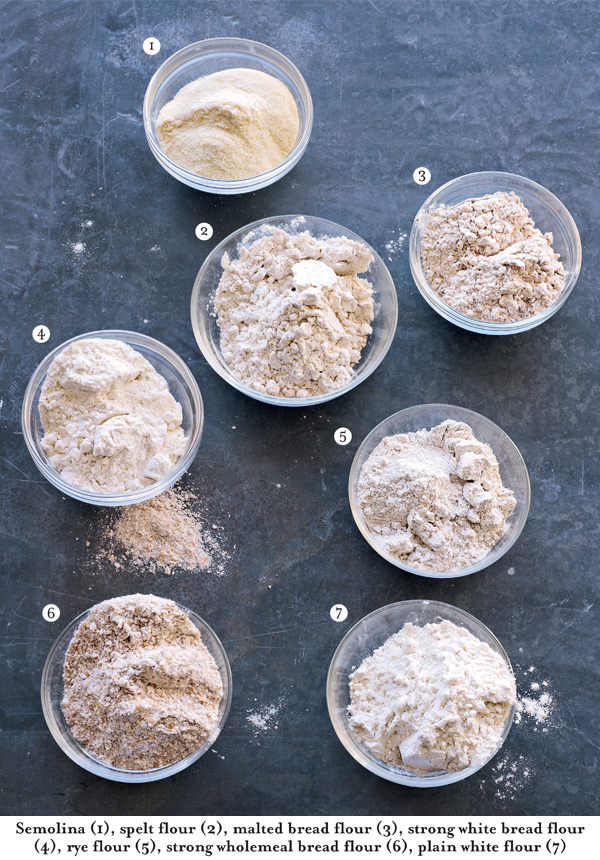
Ingredients
There are just five simple key ingredients in bread-making: flour, yeast, salt, fat and water, with various options, particularly in the choice of flour.
FLOUR
Bread needs strong flour, which means one with a protein level above 12 per cent. For cakes or biscuits, you need flour with a lower protein level, below 12 per cent. The protein level indicates how much gluten there is in the flour: gluten being the glue that binds the dough together and creates structure. High-gluten flours give the chewy texture you want in a bread, whereas low-gluten flours give a crumbly texture.
Start with a white bread flour, as it is the easiest to use. Once you find one you like and this shouldnt be difficult as most supermarkets sell good-quality bread flour stick with it. Do bear in mind that, however accurate a recipe is, each brand of flour will absorb a slightly different amount of water, depending on its precise protein level. Generally, good-quality flour will take more water, a lower grade of flour less. So, when you start making bread, keep with your chosen flour and adjust your recipes, noting how much water that particular flour needs to get the right texture.

